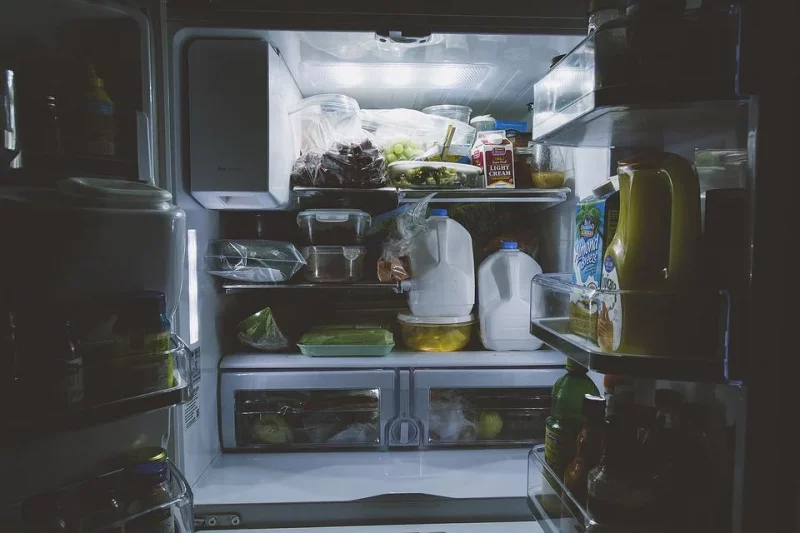Do you know how much propane does an RV fridge use? A contemporary RV fridge with an interior volume of 10 to 14 cubic feet would typically use 1.4 pounds of propane each day. This equates to about 1400 BTUs each hour. However, a few factors might increase or degrade the operation of the RV fridge. This article will assist you in learning about the usage of propane in RV fridges.
Many contemporary RV fridges are more fuel-efficient than previous models. Consequently, a modern RV refrigerator will price less than that to operate in the long term. Size, on the other hand, raises the total energy requirement.
Most RV fridge types run on propane, a cleaner, and a transportable fuel source. But if you’re boondocking or don’t have access to electricity, it could be the only option. As a result, it’s critical to manage propane usage correctly. This is just an overview, keep reading and learn more.
Determining The Quantity Of Propane Used In RV Fridge
To discover how much propane does an RV fridge use, you must first understand some fundamental math. First, you must determine how much electricity the RV refrigerator consumes. This varies greatly, especially compared to new and old units, because modern units are often more power-effective. We’ll use an RV fridge that consumes 1,300 BTUs per hour as an example, which is typical for a new device having 8–10 cubic feet of room. Each tank of propane has 92,000 BTUs of energy. So possess 417,700 BTUs of power if they have a 20-pound propane tank that contains 4.6 gallons.
Now it’s time to put your math skills to the test: If an RV refrigerator works 24 hours per day, it consumes 31,200 BTUs per day (1,300 BTUs per hour x 24 hours). A 20-pound propane tank with 427,700 BTUs can power the refrigerator for 12 days (417,700 BTUs inside the tank / 31,200 BTUs everyday use). It’s worth noting that almost all RV fridges don’t run continuously. Your device may only operate for eight hours each day, based on its performance. On a 20-pound tank, the RV fridge may last up to 39 days.
What Is The Absorption Of RV Fridge?
Absorption method fridges are propane-powered RV fridges. In addition to propane power, such fridges include an air conditioning option. A few RV fridges are also capable of running on direct current supply. Absorption refrigerators, contrary to compression system refrigerators, do not have any moving components. The RV fridge’s boiling chamber, which is loaded with water and ammonia, is warmed by small pilot light.
This ammonia or water mixture is pushed in via a system of pipes, in which the ammonia was transformed into a gaseous. This ammonia gas rises while the water returns to the boiling compartment. The ammonia gets colder and travels down tubes, taking warmth from the fridge because it passes, resulting in a chilly interior. RV fridges must be flat to work at maximum efficiency, and they must be cared for and maintained.
How Could You Reduce The Propane Consumption Of RV Fridge?
Routine maintenance, much like any other equipment in the house or RV, can ensure that it works properly. Also, it aids in detecting problematic regions so that they may be addressed before they become a much more significant issue. Keep a watch out for corrosion, rust, and leakage. Also, keep an eye out for smoke around the propane output exhaust. This might indicate a system with poor combustion.
Just a modest accumulation of dust or insect links can obstruct system ventilation. While using an absorption fridge, it is recommended to place it on flat ground. This is partly due to the cooling system’s fluids being gravity fed.
Its internal fluid cycling mechanism can be slowed if you park the RV on uneven terrain or if the fridge isn’t level inside its installation position in the RV. As longer the absorption RV was left to run in an unleveled condition, the less effective it will be and the more probable it may develop a severe mechanical defect. Whenever in doubt, verify the state of the RV’s flooring and the RV fridge using a hand level. The outside air temperature has a more significant impact on an RV fridge than on a domestic refrigerator.
Suppose you’re traveling in the springtime, autumn, or wintertime and the ambient temperature inside the camper is more remarkable than usual. In that case, you may reduce the refrigerator’s settings with no effect on the inside temperature. The heat energy mainly from the absorption fridge in RVs has vented out the back. Cold air is then drawn in through the bottom vent, while hot air is expelled from the refrigerator simultaneously. If something is obstructing or restricting the flow at the rear of the fridge, the cooling rate will be substantially hampered.
You may also be interested to know about Top RV Refrigertors.
It’s A Wrap!
We are glad to know that you have learned how much propane does an RV fridge use. We have calculated propane usage in an RV fridge and tell you how you can minimize propane consumption in an RV fridge. Thank you, friends, for reading this article till the end. You may also want to read about how long for fridge to cool and where to put fridge in small kitchen.


Many thanks to the author for the detailed discussion about the interesting facts about the use of propane in an RV Refrigerator. Also, thank you very much for sharing the tips about reducing propane usage.